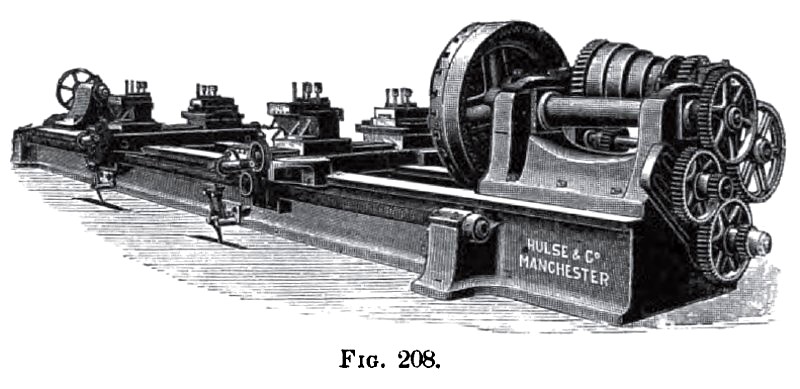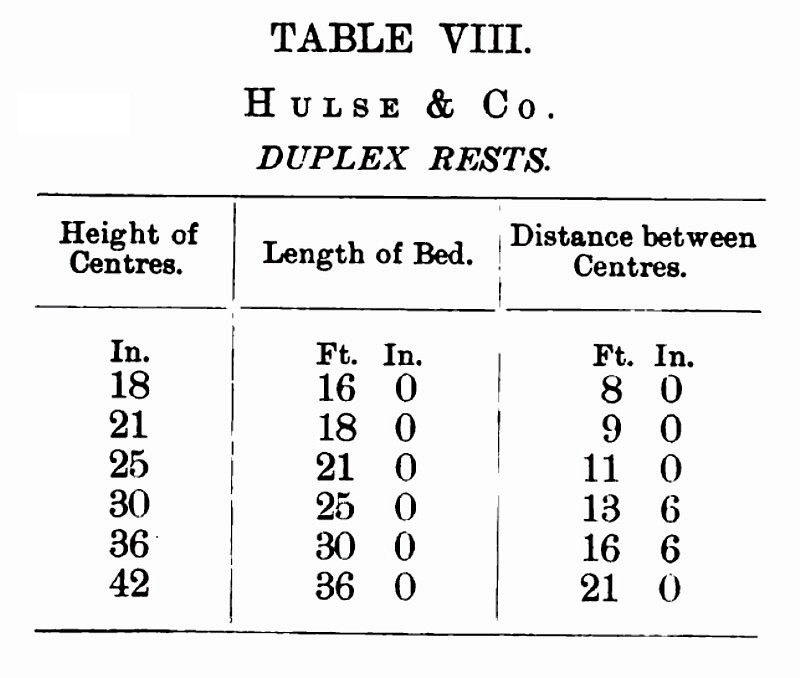|
Title: |
1900 Article-Hulse & Co., Ltd., Heavy Continous-Bed Lathe |
|
Source: |
English & American Lathes, 1900 pg 111 |
|
Insert Date: |
12/17/2012 9:26:22 PM |
|
Fig. 208 illustrates a heavy type of English lathes having a continuous bed, used for the turning of long parallel work requiring much power. Longer lathes are made for shaft-turning, but they are much lighter and of lower centres. Fig. 208 is one by Hulse & Co., Ltd., in centres from 18 in. to 42 in. (see Table VIII.). These have duplex rests, which is common English practice in heavy lathes. The front and back-rests can be actuated simultaneously or separately. In that by Hulse & Co. long tapers can be turned by the application of a swing-frame and change-wheels in front of each carriage. In some cases, as in the heavier lathes, the sliding and surfacing are effected through the lead-screw, in others the screw and back-shaft are distinct—one at front and one at back of the lathe. No belts are used for feeds, but change-wheels only, and all motions can be stopped, started, and reversed without altering the change-wheels. In Hulse & Co.'s lathe, Fig. 208, the guide-screws do not rotate, but the rotation of the nuts, effected through worm-gear, slides the carriages. Each carriage has reversing-gear, by which each motion can be reversed, applied, or suspended, each independently of the other. There are two sets of duplex rests. |
|
 1900 Hulse & Co., Ltd., Heavy Continous-Bed Lathe
1900 Hulse & Co., Ltd., Heavy Continous-Bed Lathe
 1900 Hulse & Co., Ltd., Heavy Continous-Bed Lathe Table
1900 Hulse & Co., Ltd., Heavy Continous-Bed Lathe Table
|
|